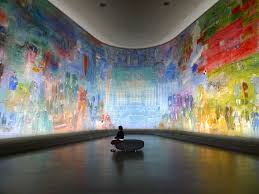career
LENINGRAD SCHOOL OF PAINTING (part 3)
 And how to explain such a change of state to “left” art, whose representatives continued to occupy key posts in all the organs of this state, which were in charge of art issues in the center and in the localities?
And how to explain such a change of state to “left” art, whose representatives continued to occupy key posts in all the organs of this state, which were in charge of art issues in the center and in the localities?
Among the supporters of the “left” views, the artists D.P. Sternberg, A.D. Drevin, V.E. Tatlin, V.V. Kandinsky, K.S. Malevich, O.V. Rozanova, M.V. Matyushin, stood out N.I. Altman and others. They formed a rather strong group, which initially determined the artistic policy of the Department of Fine Arts created under the People’s Commissariat for Education, as well as the Moscow and Petrograd Soviets. Continue reading
phenomenon
harmony
documentary
photography
movements
musician
manufacture
resistant
school
modest
enthusiasm
various
background
decorative
development
Museum
number
composition
watercolors
selection
technologies
emergence
returned
traditions
sixties
subsequent
landscape
distinguished
troubles
workshop
density
available
finally
unshakable
absolutely
community
canvas
transmitted
milestone
members
performance
again left
soldiers
province
technique
ideological
reproduction
contact
creation
different
minerals
landscapes
festivals
communal
artists
snowflakes
educational
combination
student
institution
arrogance
until
characteristic
sepia
period
professional



